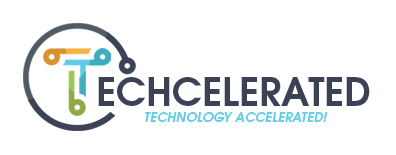2023 Cloud Trends
As the cloud computing industry continues to evolve, businesses are looking for ways to optimize their operations. In this article, we’ll explore the top 5 cloud trends that are expected to shape the industry in 2023. These trends include Hybrid Cloud/Multi-Cloud, FinOps, No-Code/Low-Code, AI and ML, and Cloud Security.
Trend 1: Hybrid Cloud/Multi-Cloud
Hybrid cloud is an IT infrastructure model that combines on-premises infrastructure with public and private cloud services. This approach allows organizations to take advantage of the benefits of both cloud and on-premises infrastructure. In 2023, hybrid cloud is expected to become even more popular as organizations look for ways to optimize their IT infrastructure.
Adopting a multi-cloud infrastructure means moving away from potentially damaging business strategies such as building applications and processes solely around one particular cloud platform, e.g., AWS, Google Cloud, or Microsoft Azure. The growing popularity of containerized applications means that in the event of changes to service levels, or more cost-efficient solutions becoming available from different providers, applications can be quickly ported across to new platforms. While back in 2020, most companies (70 percent) said they were still tied to one cloud service provider, reports have found that 84% of mid-to-large companies will have adopted a multi-cloud strategy by 2023, positioning it as one of the year’s defining trends in cloud computing.
For example, BMW Group has adopted a hybrid cloud strategy to optimize its IT infrastructure and reduce costs. By using a combination of on-premises infrastructure and public cloud services, BMW Group was able to achieve greater flexibility and scalability while maintaining control over its sensitive data.
Similarly, energy company Uniper used a hybrid cloud strategy to improve its disaster recovery capabilities. By using a combination of on-premises infrastructure and cloud services, Uniper was able to replicate its critical systems in the cloud, ensuring that they were always available in the event of a disaster.
Trend 2: FinOps
FinOps is a new approach to cloud financial management that is becoming increasingly popular among organizations. With FinOps, organizations can optimize their cloud spending by using data-driven insights to make informed decisions about cloud usage and cost management.
With a recession likely impending, organizations are keeping a close eye on their spending and are on the lookout for areas to cut costs and drive efficiencies. And with the cloud being an area of significant expenditure, organizations are placing extra emphasis on cost-effectiveness on the cloud.
These common pain points have led to the emergence of FinOps, a data-driven approach to cost management on the cloud. Built on the same foundations of agility, efficiency, and integration as DevOps, FinOps enables proper financial governance on the cloud through strategies and technologies that ensure organizations can better monitor and optimize cloud spending, even across hybrid environments.
For example, software company Autodesk used a FinOps approach to reduce its cloud costs by 30%. By analyzing its cloud usage data and identifying areas where it was overspending, Autodesk was able to reduce its cloud costs without sacrificing performance or reliability.
Similarly, professional services firm KPMG used a FinOps approach to help its clients optimize their cloud spending. By providing clients with data-driven insights into their cloud usage, KPMG was able to help clients reduce their cloud costs while maintaining their desired level of performance.
Trend 3: No-Code/Low-Code
No-code is a cloud development model that allows users to create applications without needing to write any code. No-code development platforms are becoming increasingly popular, as they allow organizations to create custom applications quickly and easily, without requiring extensive programming knowledge.
This category of low-code and no-code solutions includes tools for building websites, web applications and designing just about any kind of digital solutions that companies may need. Low-code and no-code solutions are even becoming available for creating AI-powered applications, drastically lowering the barriers to entry for companies wanting to leverage AI and ML. Many of these services are provided via the cloud – meaning users can access them as-a-service without having to own the powerful computing infrastructure needed to run them themselves. Tools like Figma, Airtable, and Zoho allow users to carry out tasks that previously would have required coding experience, such as designing websites, automating spreadsheet tasks, and building web applications, and I see providing services like this as an area where cloud technology will become increasingly useful in 2023 and beyond.
For example, telecommunications company Verizon used a no-code development platform to create a custom application that helped it manage its supply chain more efficiently. By using a no-code development platform, Verizon was able to create the application in a fraction of the time it would have taken using traditional development methods.
Similarly, insurance company Farmers Insurance used a no-code development platform to create a custom application that helped it automate its claims processing. By using a no-code development platform, Farmers Insurance was able to create the application quickly and cost-effectively, without needing to hire additional developers.
Trend 4: AI and ML
AI and ML are becoming increasingly important in cloud computing, as organizations look for ways to automate their operations and gain insights from their data. In 2023, we can expect to see continued growth in the use of AI and ML in cloud computing.
Gathering data and training algorithms require huge amounts of computing power and storage space that is generally more cost-efficient to rent as-a-service. Cloud service providers are increasingly relying on AI themselves for a number of tasks. This includes managing the vast, distributed networks needed to provide storage resources to their customers, regulating the power and cooling systems in data centers, and powering cyber security solutions that keep their data safe. In 2023, we can expect to see continued innovation in this field as hyper scale cloud service providers like Amazon, Google, and Microsoft continue to apply their own AI technology to create more efficient and cost-effective cloud services for their customers.
For example, the healthcare industry is using AI and ML to improve patient outcomes. By analyzing patient data in the cloud, healthcare providers can identify patterns and make more informed decisions about patient care.
Similarly, the finance industry is using AI and ML to detect fraudulent transactions. By analyzing transaction data in the cloud, financial institutions can quickly identify suspicious activity and take action to prevent fraud.
From creating more personalized cloud experiences and enhancing data security, to increasing cloud automation and enhancing self-learning capabilities, cloud providers are intent on innovating and scaling their AI and ML services.
It’s for this reason that the global AI software market is already valued at $62 billion by Gartner, and is forecasted to reach almost $134.8 billion by 2025.
Trend 5: Cloud Security
As cloud computing becomes more widespread, cloud security is becoming increasingly important. In 2023, we can expect to see continued growth in the adoption of cloud security solutions. Migrating to the cloud brings huge opportunities, efficiencies, and convenience but also exposes companies and organizations to a new range of cybersecurity threats. On top of this, the growing pile of legislation around how businesses can store and use personal data means that the risk of fines or (even worse) losing the trust of their customers is a real problem.
Spending on cyber security and building resilience against everything from data loss to the impact of a pandemic on global business will become even more of a priority during the coming year. However, as many companies look to cut costs in the face of a forecasted economic recession, the emphasis is likely to be on the search for innovative and cost-efficient ways of maintaining cyber security in order to get the most “bang for the buck.” This will mean greater use of AI and predictive technology designed to spot threats before they cause problems, as well as an increase in the use of managed “security-as-a-service” providers in 2023.
For example, data security company Okta is using cloud security solutions to protect against cyber threats. Okta’s cloud-based security solutions provide secure access to applications and protect against threats such as phishing and malware.
Similarly, healthcare company Humana is using cloud security solutions to protect its patient data. By using cloud security solutions, Humana can ensure that its sensitive patient data is protected from cyber threats.
Human error is the leading cause of data loss, accounting for 85% of cloud data breaches. When considering that IBM reports that almost half of all data breaches occurred in cloud environments in 2022, it’s clear that this poses real threats to and beyond a business’s bottom line.
Conclusion
As the cloud computing industry continues to evolve, businesses are looking for ways to optimize their operations. In 2023, we can expect to see continued growth in the adoption of hybrid cloud, FinOps, no-code, AI and ML, and cloud security solutions.
Organizations that embrace these trends will be able to optimize their IT infrastructure, reduce costs, and gain valuable insights from their data. By keeping up with the latest cloud trends, businesses can stay ahead of the competition and achieve their goals more efficiently and effectively.


